When it comes to concoctions designed to help your homebuilt project rotate, grip, bond and generally stick together, builders are faced with a veritable witch’s brew of products. For example, Aircraft Spruce’s catalog has an entire page devoted to LPS spray products—and that is within a section of many tens of pages covering adhesives, solvents, lubricants, polishes and cleaners. It can all be a bit overwhelming if you are setting up a shop from scratch; I know it was for me. However, as I near the end of my RV-4 pro-ect, I realize that although there may be five different products I could have used as thread sealant for my brake fittings, I ended up using only one. That could be said of practically every item in this list. In addition, while a manufacturer like Permatex may offer a diverse array of RTVs, for all practical purposes, High Temp Black will do an acceptable job for most builders in most applications. There’s really no need to unnecessarily duplicate, since it only wastes money and material.
With that in mind, I’ve drawn up a list of necessary-but-sufficient liquid consumables that will see you through your project. This list obviously reflects my own choice of what represents the best particular product for a specific application, and you are encouraged to do your own research to decide if something else would work better for you. The main point here is that you really only need about a dozen fluid products to properly build most kits.
The Permatex Rainbow Conundrum
Is this essentials list really even necessary? Of course some readers will want to buy every color of Permatex, with the attitude that superior craftsmanship demands the best tools available. This is certainly an admirable approach to building, but one that goes above and beyond what is perhaps practical and necessary. At the other end of the spectrum is the builder who thinks he can just get by with a can of WD-40 and some blue Loctite. That’s all he ever needed for his car. And let’s face it, as an automobile society, that is a valid reference point for many new builders. But airplanes have unique requirements compared to cars—primarily weight, vibration and safety considerations. In addition, what is required to maintain a car (or aircraft) is different than what is required to build one. So I’d like to encourage you to at least take the middle road here (if not the every-color-of-Permatex high road), because it will result in a safer aircraft. There is a big push in Experimental aviation to lower the accident rate, and yes, using the proper Loctite on your brake fittings, or a proper firewall sealant instead of RTV, can make a huge difference—it can prevent you from becoming a statistic.
Notes to the Chart
The first two columns list the name and uses of the product. The third column lists the recommended storage temperature and shelf life according to either the MSDS (Material Safety Data Sheet) or per direct conversation with the manufacturer, if such information was not contained in the MSDS. Although most products list a 1–2 year shelf life—much less than the average time most homebuilders take to complete their projects—experience shows that many products will last longer if kept cool. This is a good reason to put a dorm fridge in your shop; it’s a great place to store these items (and of course that one liquid consumable we all enjoy after a long day in the shop).
The final entry in the third column is a suggested quantity to purchase. Unfortunately some items, like 3M Fire Barrier for instance, come in a minimum tube size that is much more than you’ll probably ever need. In that case, reduce/reuse/recycle, and minimize the environmental and economic impact of our hobby by sharing or donating. I for one would be happy to receive a somewhat out-of-date tube of Hylomar if I knew it had been properly capped and refrigerated.
Don’t Talk Funny
On the issue of safety, be sure to protect yourself as well. Some of these products are more or less nasty and noxious; get yourself a properly fitting NIOSH-approved respirator and a box of P100 or equivalent replacement cartridges. No, they aren’t cheap, but using an expired cartridge is worse than none at all if it gives you a false sense of protection in a noxious environment. 3M lists the maximum service life of its P-series filters as 40 hours/30 days (whichever comes first), and it can be literally minutes if you are hovering over an acetone-soaked rag. Keep your respirator in a large Ziploc bag when not in use to minimize cartridge degradation.
In addition, I’d recommend buying a case (yes, a 1000-count case) of nitrile gloves. You can easily go through 20 or 30 in a Pro-Seal session. Having a ready supply means you won’t think twice about using them, and it will be much easier to get your kids or spouse involved if they aren’t getting nasty gunk on their hands. I’ve used about half a case building my RV-4. In addition to gloves, I put on Invisible Glove hand cream whenever working with composites. I don’t want my homebuilding career hampered by an allergic sensitivity to epoxy.
Now that we’ve covered the basics, let’s expand on some of the information contained in the reference chart.
Dry film lubricant for rod-end bearing. Note yellow Torque-Seal on both the bracket nuts and rod-end stop nut.
Squeeze-out of Loctite 567 from the brake slave cylinder fitting. Loctite 567 is anaerobic, so don’t worry if the squeeze-out stays wet—it will have cured on the unexposed threads.
It’s Slippery – What more do I need?
Some readers will probably wonder why the mechanic’s trusty pal, WD-40, is missing from the list. Let’s divide lubricants into three categories and see why WD-40 is not really something you would use on an aircraft:
1. Wet-film petroleum distillates: This covers greases and oils, which leave a wet film on the part being lubricated.
2. Dry-film petroleum distillates: LPS 1 is an example of a petroleum distillate that leaves a dry, greaseless film on the part being lubricated.
3. Dry-film non-petroleum distillates: like LPS 1, these spray lubricants—for example silicone or graphite—leave a dry film on the part being lubricated.
The important thing to note about wet-film lubricants is that they are usually contained, either within an engine, boot or sleeve. This prevents them from picking up contaminants from the environment. For aircraft, they would usually be used in engines, gears or sealed bearings. Rod-end bearings, brake calipers or piano wire hinges, on the other hand, are all exposed to the environment. In that case, it makes more sense to use a dry-film lubricant like LPS 1 or silicone spray, rather than WD-40, since they are less likely to attract dirt and form gunk. The caveat here is that dry-film lubricants tend to not last as long as wet films, so you may need to apply them more often. Regarding petroleum versus non-petroleum dry-film lubricants, you need to be mindful when using silicone spray near anything that will eventually get painted. Silicone can be difficult to remove completely (say, from the crevice around a rivet head) and can cause paint problems. In that case, LPS 1 might be the better choice.
Picky Picky…
Let’s wrap up by mentioning some items I’ll admit I have, but didn’t include in the list, and my reasons why:
• Loctite 242 (Blue): Yes, we’ve all got a tube of this somewhere. But I’ve only used thread-locking fluid once or twice during my build. Here’s why: Firewall aft, all bolts use either a nylon nut, castle nut with cotter pin, plain nut with star washer, or crimped anchor nut. In each of these cases, the design of the fixture theoretically removes the need for a threadlocker. Firewall forward it is the same case, except that nylon nuts should be replaced with all-metal stop nuts. Although some builders use a high-temp threadlocker on nuts going onto engine-accessory studs, the Lycoming overhaul manual does not specifically call out for the use of threadlockers.
• I haven’t included cleaners and polishes for two reasons: first, they aren’t really necessary for building, and second, there are innumerable reviews and forum discussions about the best cleaners, waxes and polishes to use on aircraft and canopies (usually attended by unsubstantiated promises of increased speed!). Regarding polishing, if you only have a small area to work on—say a polished spinner or aluminum landing gear—a product like Mother’s Mag and Aluminum Polish will do the trick. For polishing an entire airplane, Nuvite products are fantastic, but that kind of polishing is beyond the scope of this article.
• I’ve tried to be as specific as possible in providing product names, but some products have different versions that you need to be aware of. For example, Pliobond has a low-VOC formulation that I found just doesn’t seem to hold up very well. (Due to environmental regulations, many products now have low-VOC versions that may or may not stack up against the original formula.) Pro-Seal also has a number of varieties with different cure rates. The B-2 version listed here offers a two-hour work time; if you inadvertently got the B-1/2, you’ll find yourself in a mighty mess when the sealant starts kicking off after only half an hour.
RTV used to seal the rear baffle-to-engine gap. The black is Sikaflex primer left over from the canopy attachment. The author hoped it would enhance adhesion of the RTV, but it doesn’t seem to have made a significant difference.
A fillet of RTV on the exhaust gasket can supposedly serve as an early indicator of blow-by; the RTV will change color from the escaping gases.
Choosing the right sealants, lubricants and adhesives may not be as exciting as picking out an engine or an EFIS, but it’s still an important part of your project. Do a little homework to find the right products, and save the WD-40 for lubricating pruning shears or the hinges on your toolbox.
A small spray bottle of rubbing alcohol is great for removing Sharpie marks, as well as a lubricant for fitting parts. Here the breather tube from the air/oil separator is being misted with alcohol before being slipped over the PCV valve.
Firewall sealant being applied to the brake line/EI wiring pass-through. As with Pro-Seal, this would have turned out less messy if it had been masked.


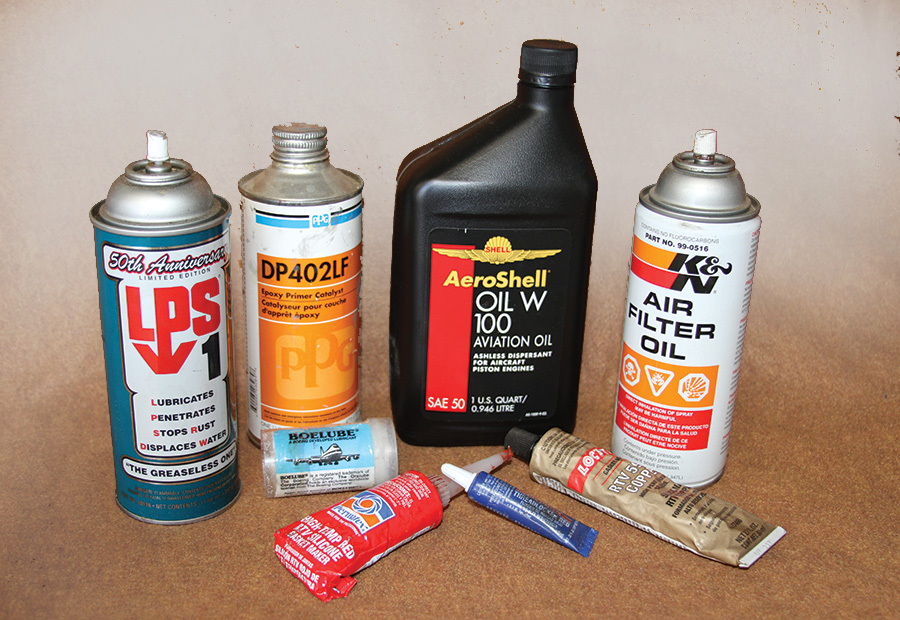
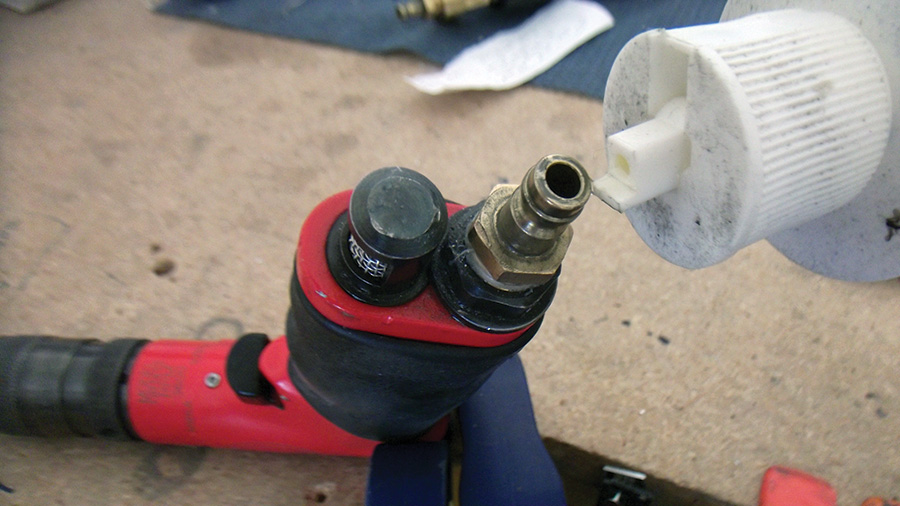
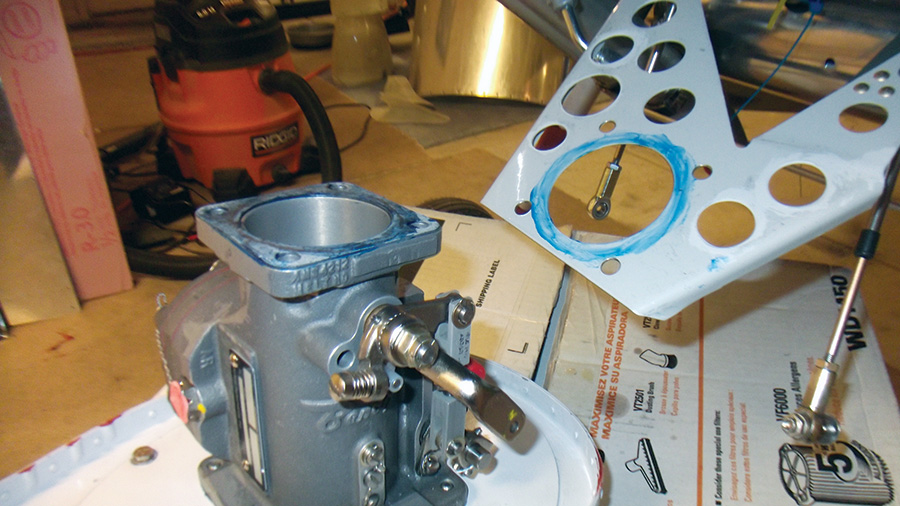
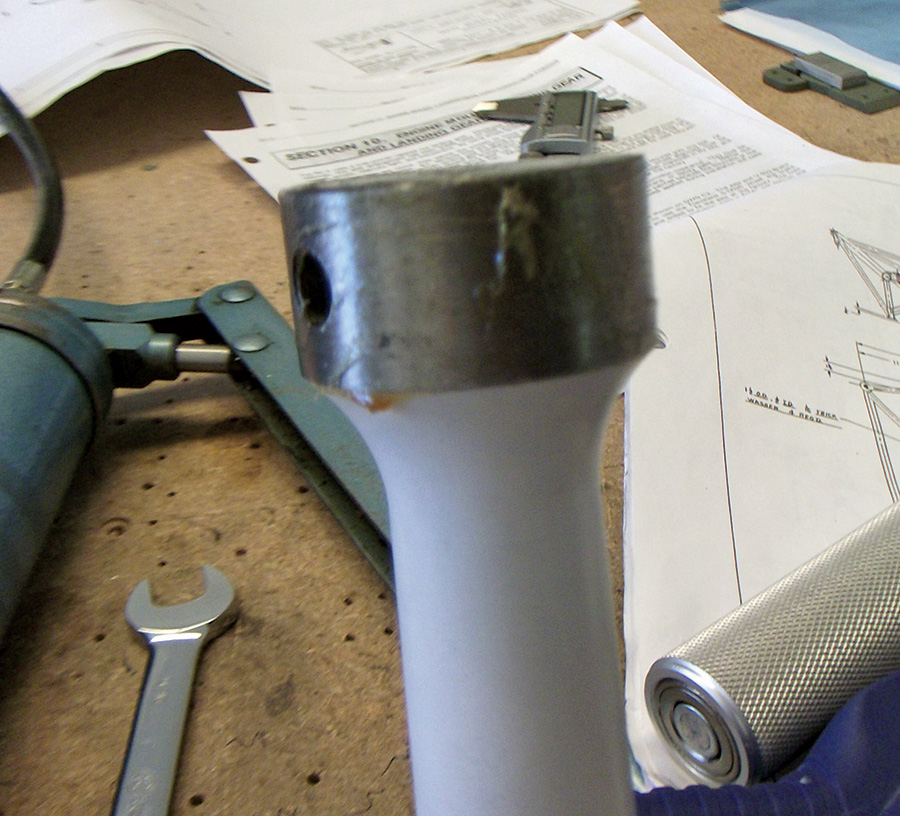

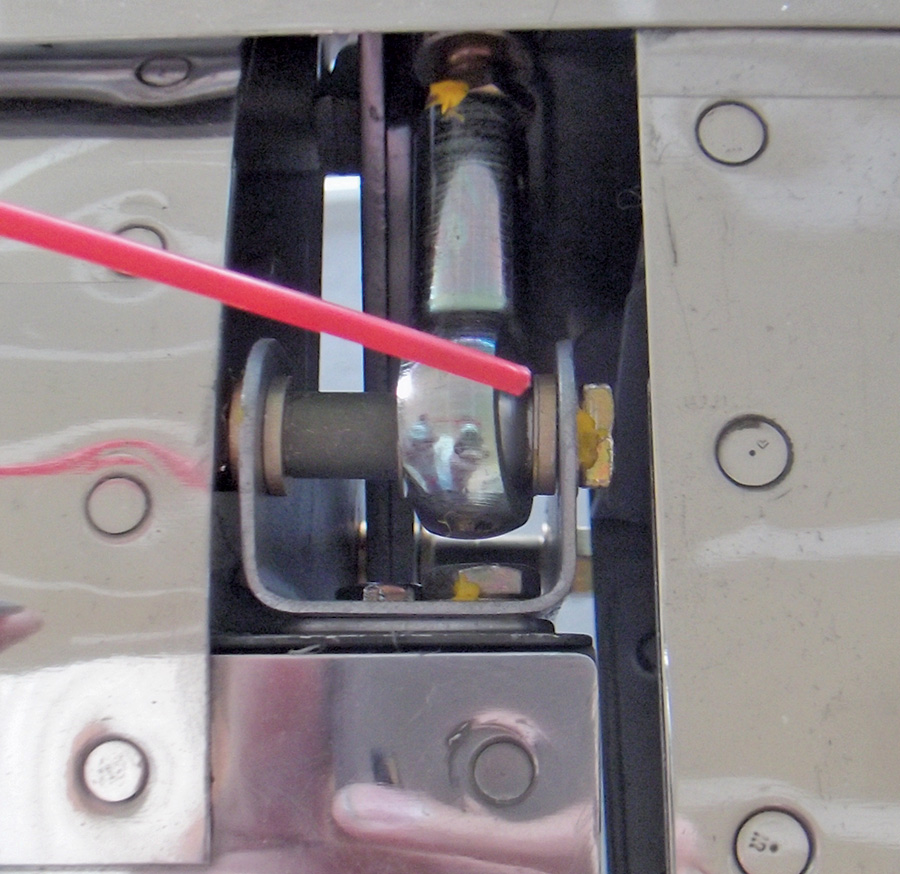

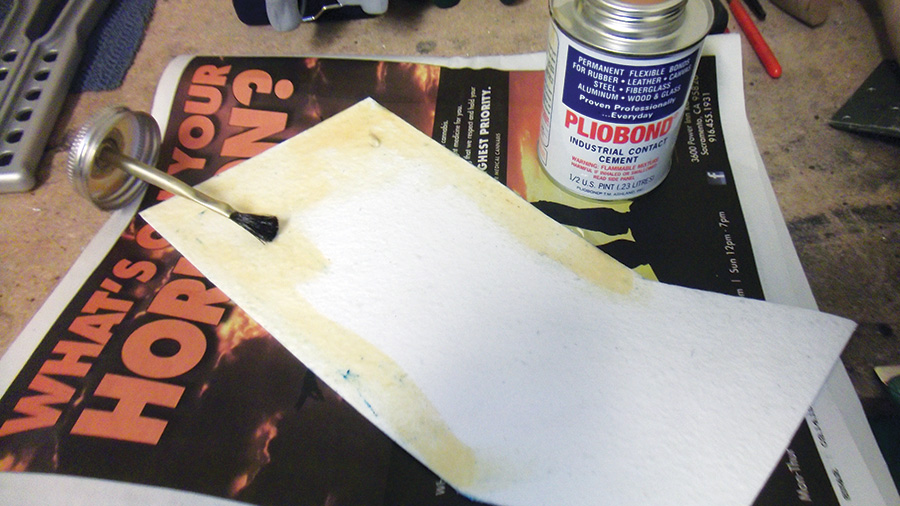
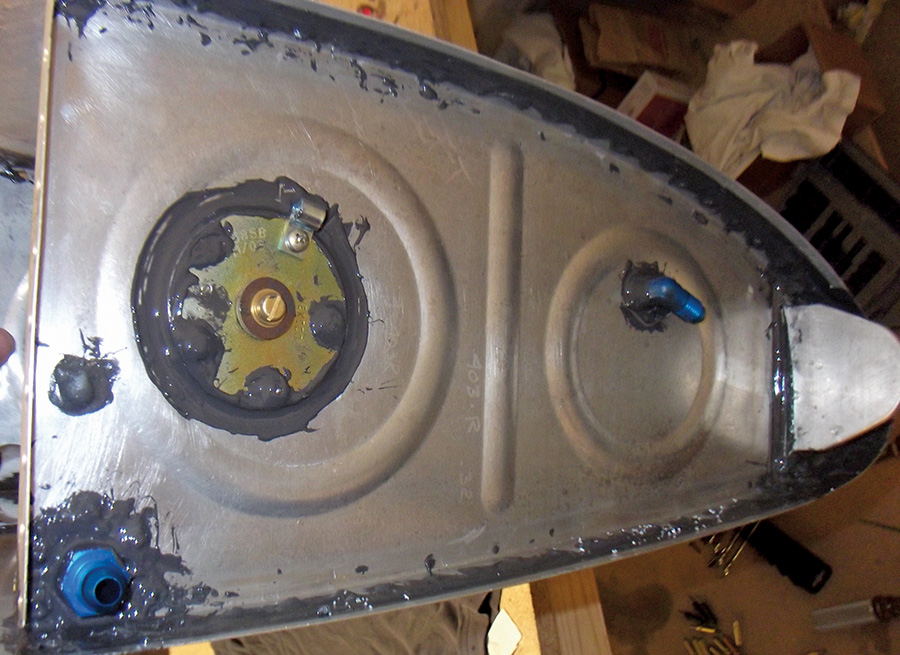
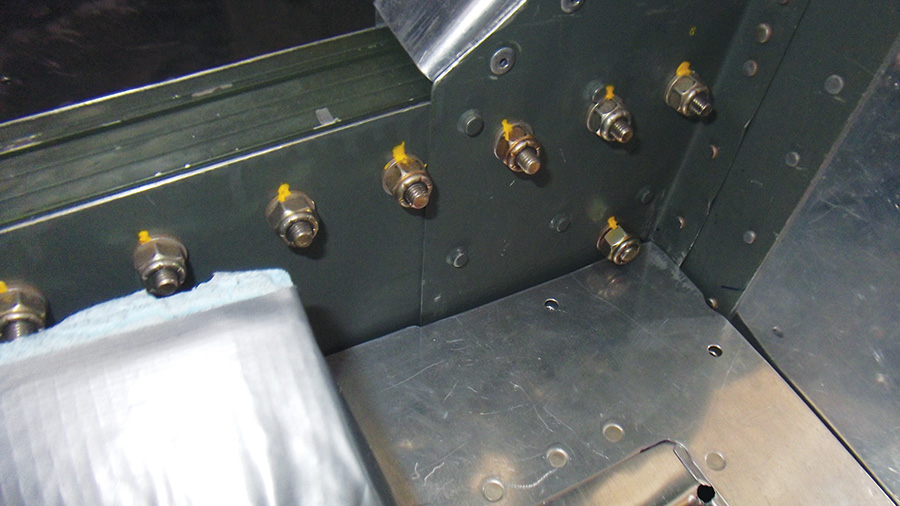

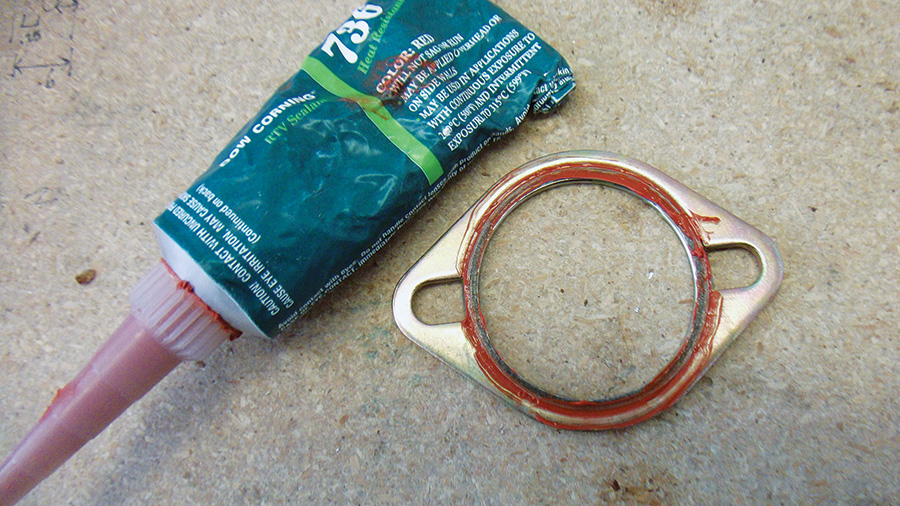
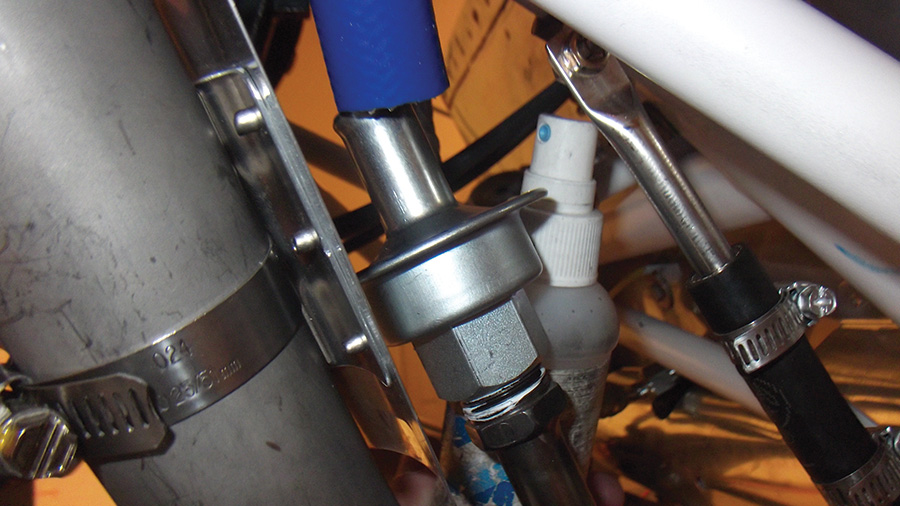
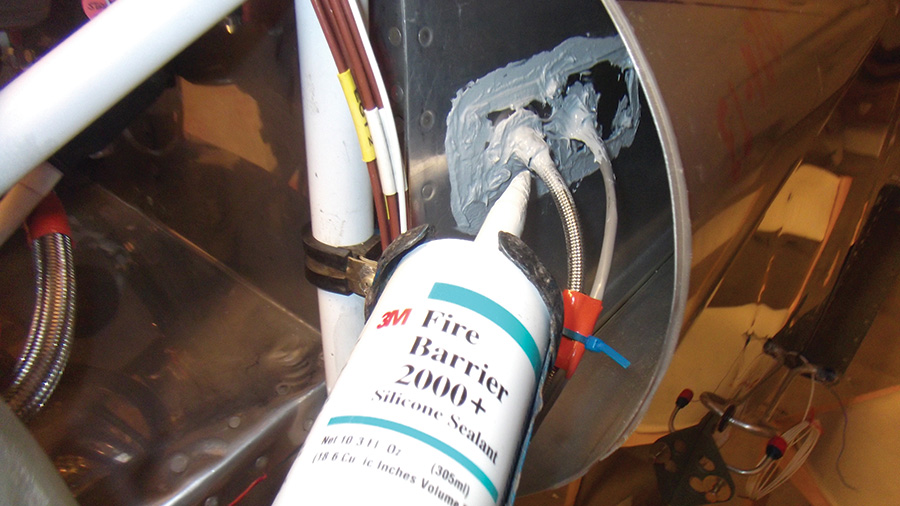


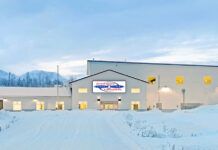

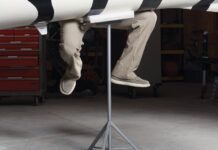
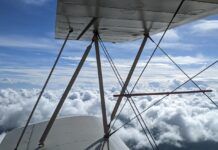
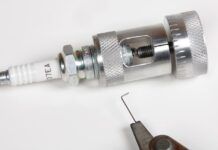
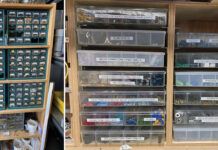
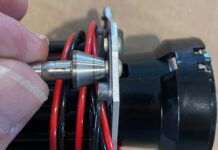

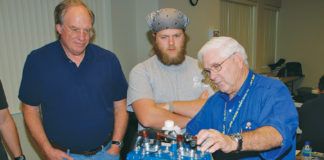
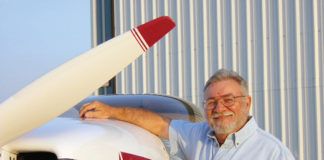
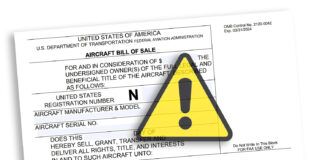
Useful article as ever, thank you! 🙂
It was interesting to see a tube of Loctite 5920 RTV Copper Silicon Gasket Maker appears in the headline image, but without any further info on this product in either the article, or the chart image. That’s a shame as it seems like a useful product to keep in the tool box. Here’s the product page for anyone interested: https://www.henkel-adhesives.com/us/en/product/gasketing-sealants/loctite_si_59200.html
Just a suggestion: it might be worth checking the links in associated graphics before re-broadcasting these older articles, for example, the link https://tinyurl.com/Isapklj in the chart – no longer points to a generic page for Permatex’s Ultra Black High Temperature RTV. Since the article was first published, Permatex seem to have created a number of otherwise identical pages differentiated only by product package size. Here’s one of the pages for that RTV: https://www.permatex.com/products/gasketing/black-gasket-makers/permatex-ultra-black-rtv-silicone-gasket-maker-3-35-oz/
Lastly as you suggest, aircraft builders don’t need every product to build or maintain an aircraft, but as I recently discovered some products or brands are either difficult to source, have longer lead times or are more expensive than others in some geographic locations, so a more complete list of products would be interesting to compile. For example, I recently discovered that while Boeing recommends LPS-3 as a corrosion inhibitor (according to a friend working in the industry) it was more expensive and has a longer delivery time than XCP’s products.
(I’ve no commercial interest in any the above-mentioned products.)